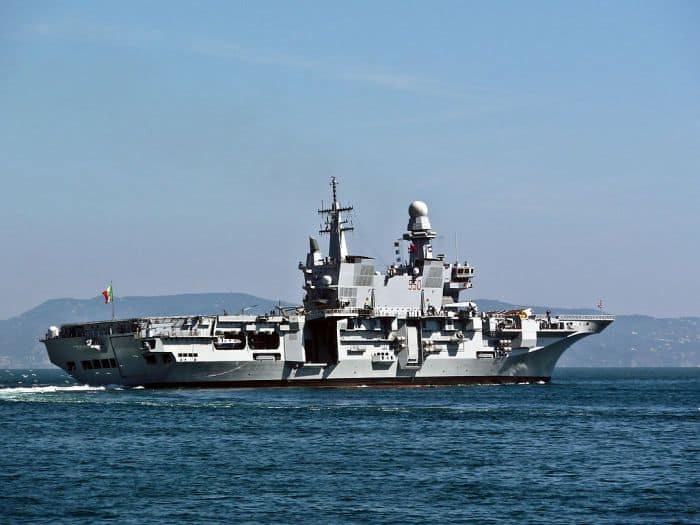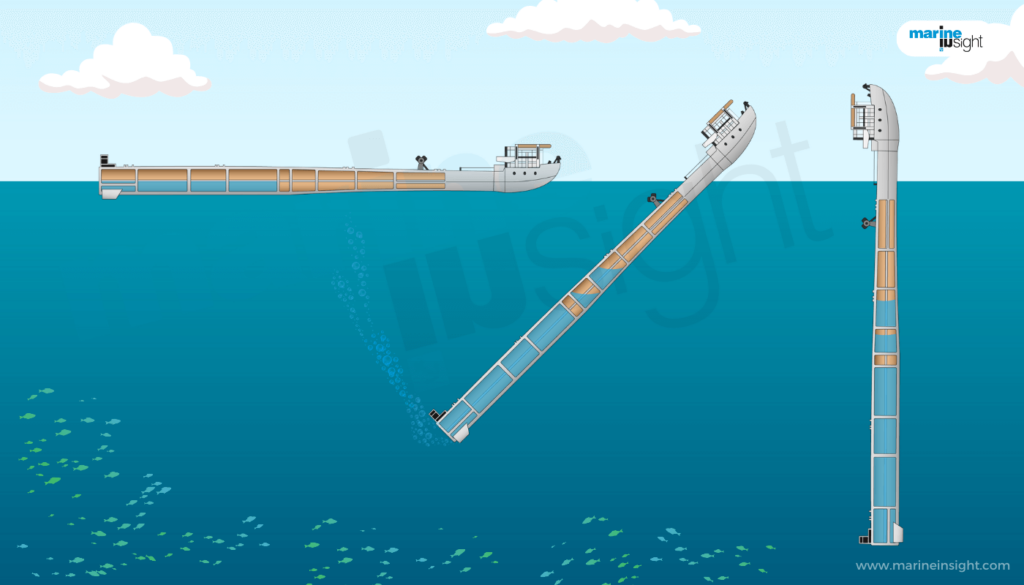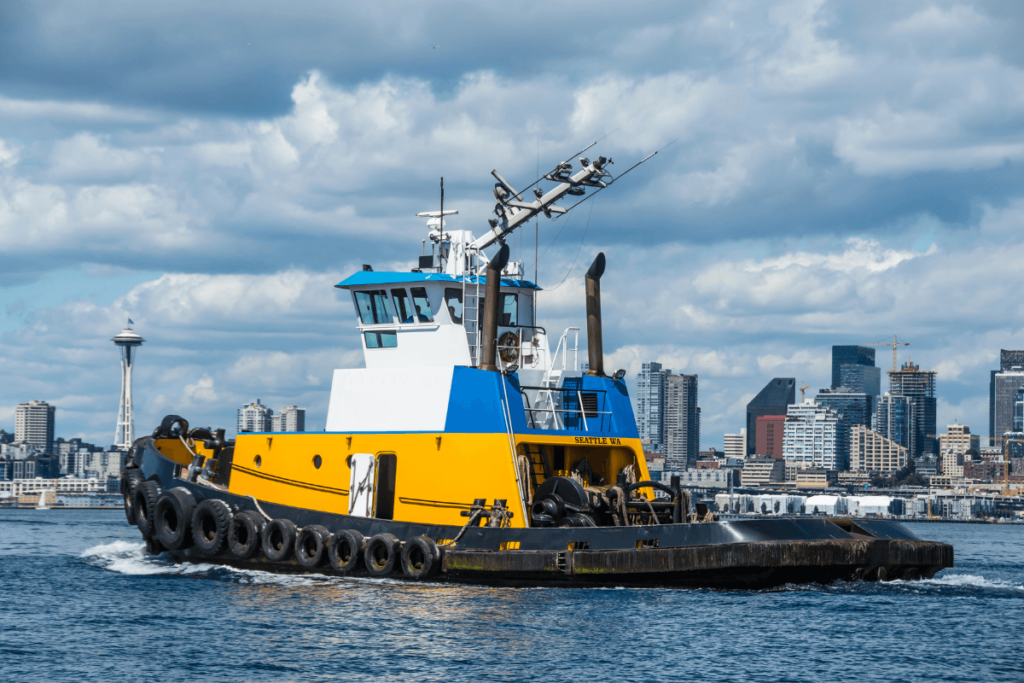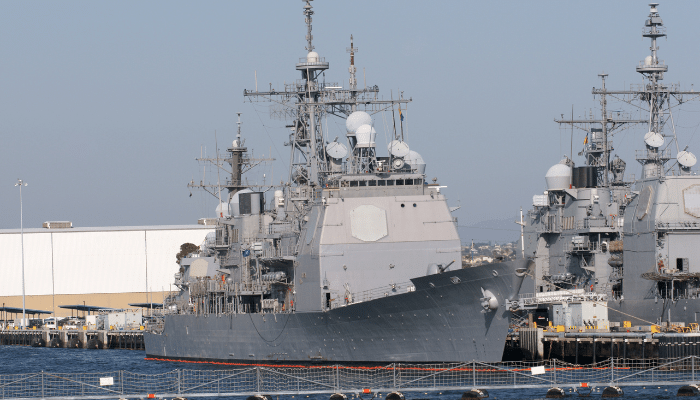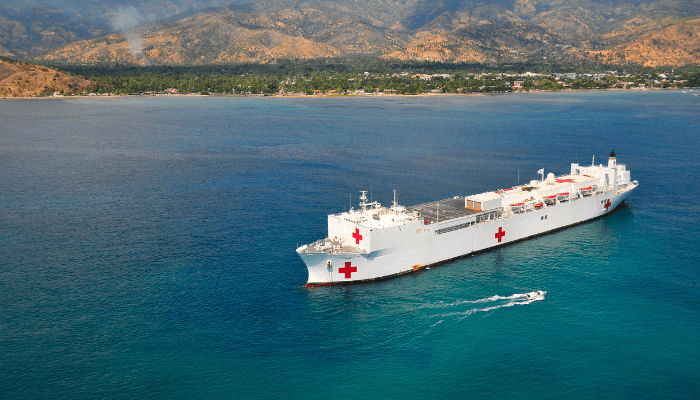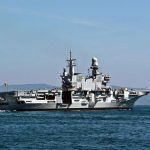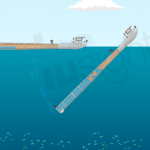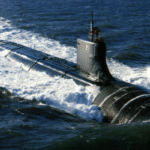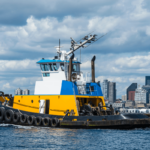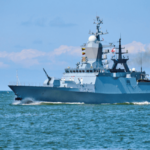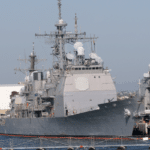5 Fastest Submarines in the World
Submarines are an important part of any country’s Naval Fleet. They can travel underwater without being detected and spy on the enemy or even deploy lethal weapons, lay mines around ports, sink ships without getting noticed and fire missiles precisely, destroying their targets.
Some of the world’s fastest submarines are nuclear-powered. They utilise nuclear reactors to generate steam that powers turbines and propellors, allowing the submarines to travel at high speed when submerged for longer durations without coming to the surface.
Soviet-era K-222 achieved the title of fastest submarine in the world when it achieved a speed of 44.7 knots in 1971. The Akula Class Submarines of Russia are also known for their speed, attaining around 35 knots. The U.S also has a sophisticated fleet of naval submarines, such as the Seawolf Class and Virginia Class.
There are diesel submarines, too, and though they are usually a little slower than their nuclear counterparts, even they can attain impressive speeds. For instance, the German Type 212A Submarine can reach a speed of 20 knots, and so can other submarines like those of the French Scorpene-Class and the Gotland Class Subs of Sweden.
A submarine’s speed is determined by many factors like its size, propulsion system and water conditions. However, it is important to remember that speed is not the only consideration when talking about submarine design since stealth and silent functioning are equally important.
Let’s take a closer look at the 5 fastest submarines in the world that are currently in service and some of the ones that have been decommissioned.
1. USS Seawolf
Also called the SSN-21, this nuclear-powered fast attack sub is the lead ship of her class and the 4th submarine in the U.S Navy named after the seawolf, a solitary fish which looks scary due to its appearance.
Electric Boat Division of General Dynamics was awarded the construction contract, and her keel was laid down in 1989. It was launched in 1995 and commissioned two years later, in 1997.
The submarine is 108 m long and 12 m wide. It has an 11 m draft, two steam turbines, a shaft and a pump-jet propeller. It can attain a maximum speed of 35 knots when underwater and 18 knots and more when on the surface.

Its armament includes eight torpedo tubes for weapons, including 50 Tomahawk land attack missiles, harpoon anti-ship missiles, and Mk 48 guided torpedos.
The Seawolf Class of the U.S Navy has two more submarines: the USS Connecticut and USS Jimmy Carter. Although it was initially decided that the class would have 29 submarines, budget constraints led to the development of just three such submarines.
Each submarine of this class cost around 3 billion dollars, making it the most costly US Navy fast attack sub.
2. HMS Ambush
This Astute-Class Nuclear Attack Submarine belongs to the Royal Navy. It was ordered in 1997 from GEC’s Marconi Marine, presently called BAE Systems Submarine Solutions.
The submarine was laid down in 2003, named in 2010 and launched in 2011. She completed her sea trails in 2012 and was commissioned at HM Naval Base Clyde in 2013.
HMS Ambush is 97 m long, 11.3 m wide and has a 10 m draught. It can attain a maximum speed of 30 knots when submerged.
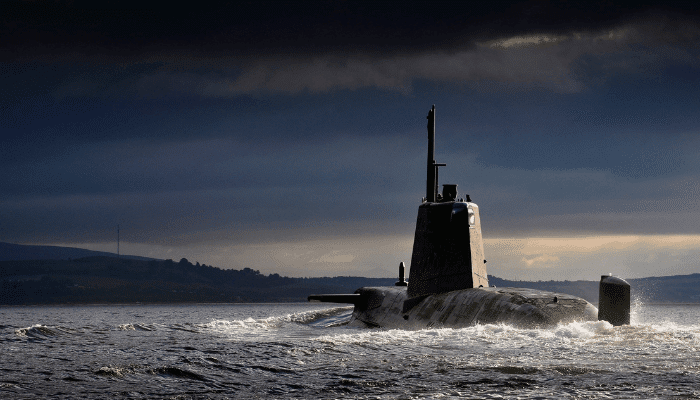
The nuclear reactor of Ambush does not require refuelling in her 25-year career. This sub can also purify air and water and go worldwide without resurfacing. The only limitation is that it can carry just three months of food and water for 98 officers and ratings.
It can accommodate 38 weapons in 6 torpedo tubes, each being 21 inches long. The submarine can use Tomahawk Block IV missiles for land attacks with a 1600 km range and Spearfish torpedoes.
There are 7 Subs in this class, including HMS Astute, the lead ship of this class. These submarines were built to counter the Soviet submarines, the fastest in the world at the time.
Hence, after conducting research, it was decided that the Astute class should have a revolutionary design, an enhanced nuclear propulsion system, an integrated sonar suite, and many other features.
3. USS Virginia
USS Virginia also referred to as SSN-774, is a nuclear cruise missile attack sub and the lead ship of her class.
Electric Boat Division of General Dynamics Corporation in Groton was given the contract for her construction in 1998, and her keel was laid in 1999. Launched in 2003, she became the first submarine of the U.S Navy to be designed on a computer.
It has a unique feature, a photonics mast, allows the designer to keep its control room in a less constrained space. It has an all-digital ship and ballast control systems operated by senior watchstanders and a pressure chamber to deploy divers, SEALs, and other special forces while submerged.
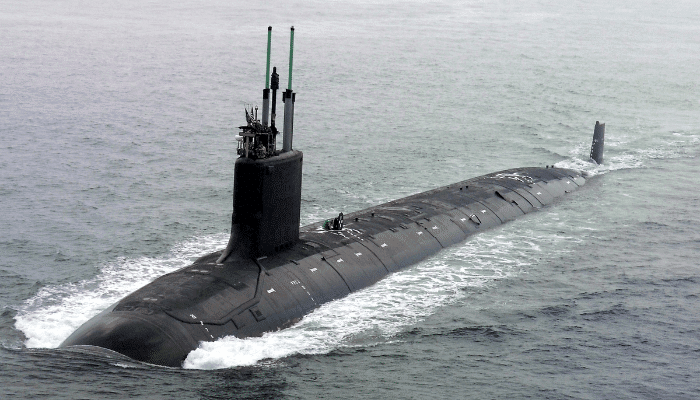
USS Virginia has a displacement of 7800 tonnes and measures 115 m lengthwise and 10.4 m breadthwise. It has a 9.8 m draft and a speed of 25 knots.
The sub has a nuclear reactor, two steam turbines, a single-shaft pump-jet propellor and a secondary propulsion motor. It can accommodate 134 officers and enlisted personnel.
USS Virginia’s armament includes 12 VLS tubes, four torpedo tubes for Mk-48 torpedoes and a BGM-109 Tomahawk.
Virginia Class Submarines are made for various missions, including anti-submarine warfare, intelligence gathering, surveillance, etc. They were made to replace the Los Angeles class of subs, most of which have already been decommissioned.
4. Imperator Aleksandr III
This Borei-Class Nuclear Powered Ballistic Missile Submarine is a part of the Russian Navy. It was named after Alexander III of Russia. This submarine is equipped with 16 nuclear-tipped Bulava intercontinental ballistic missiles.
The Borei is the first new generation of underwater vessels that Russia launched since the Cold War.
Built by Sevmash, the sub was laid down in 2015, launched in 2022, and commissioned on 11 December 2023.
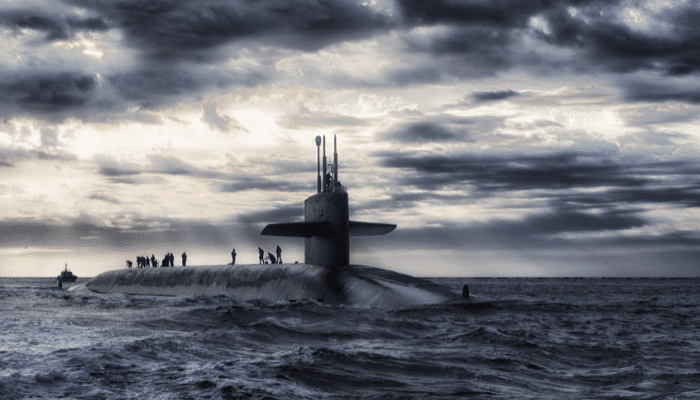
It displaces 14,720 tonnes when surfaced and 24,000 tonnes when submerged. It is 170 m long and 13.5 m wide with a 10 m draught.
Imperator Alexandr III can reach a speed of 25 knots and can support a complement of 130 officers. It carries 16 R-30 Bulava SLBMs, six torpedo tubes and an RPK-2 Vyuga anti-submarine missile.
5. Shang-Class Submarines
Shang Class is a family of second-generation nuclear-powered attack submarines constructed by China Shipbuilding Industry at Bohai Shipyard in Huludao, China’s Liaoning Province.
There are 6 Shang-Class subs in service with the Chinese Navy, including Shang I class SSNs or Type 093, Shang II Class or Type 093A and Shang III Class SSNs, also called Type 093B. The Type 093A and Type 093B are the improved versions of the Type 093 submarine.
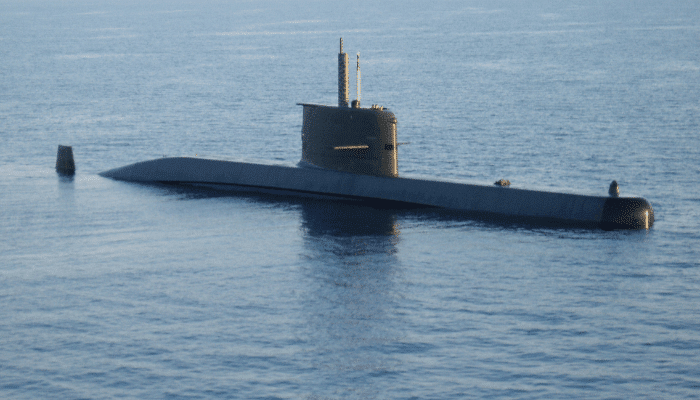
The Shang Class Subs are 107 m long, with a beam of 11 m and a 7.5 m draught. With a 7000-tonne displacement, they have a water-drop-shaped hull, a pair of fin-mounted hydroplanes and four diving planes for controlling the motion of the submarine.
It can accommodate 100 crew members and has a computerised fire control system. It also has a surface search radar, radar warning receiver and advanced direction finder. Powered by a pressurised water nuclear reactor engine, it can attain a maximum speed of 30 knots.
Its six torpedo tubes can launch Chinese and Russian anti-submarine and anti-ship torpedoes.
World’s Fastest Submarines That Were Decommissioned
1. Soviet K-222
K-222 was a Papa Class nuclear cruise missile Submarine of the Soviet Navy during the Cold War Era. Although the Soviets thought it to be an unsuccessful design, upon completion, it turned out to be the fastest submarine in the world and the first to have a titanium hull.
The sub was given many names, such as K-18 in the initial phase, which was changed to K-162 when it was being built, and finally, it was called K-222 in 1978.
The K-222 displaced 5,197 tonnes when surfaced and 7,000 tonnes when submerged. It was 106.92 m long and 11.5 m broad. It had two nuclear reactors and attained a speed of 44 knots or 81 km per hour when submerged. It had a complement of 82 and an endurance of 70 days.
The K-222 was envisaged since the Soviet Government was not satisfied with the Echo Class of nuclear submarines, which came to the surface for firing missiles. Hence, in 1958, it authorised a program for building a submarine that would be fast and could launch missiles while remaining submerged.
The submarine was commissioned in 1970 and was armed with ten short-range anti-ship cruise missiles and four torpedo tubes to destroy American aircraft carriers. It was a part of the Soviet Red Banner Northern Fleet in the 1970s; however, cracks in her hull led to an extended repair period from 1972 to 1975.
There was an accident in her nuclear reactor in 1980. She went to her last patrol in 1981, after which she was removed from service and scrapped in 2010.
2. Soviet Alfa-Class
The Alfa Class, also called Project 705 Lira, was a class of nuclear attack subs in service with the Soviet Navy from 1971 to the 1990s, and one served the Russian Navy till 1996.
They were the fastest subs ever built, and only the K-222 exceeded them in submerged speed. They displaced 2300 tonnes when on surface and 3200 tonnes when submerged.
They were 81.4 m long and 9.5 m wide and could attain a speed of 41 knots when submerged. Alfa Class subs had a complement of 31 officers and carried six torpedo tubes, 53-65K torpedoes, VA-111 Shkval torpedoes and 24 mines.
The Project 705 submarines were unique since they had a titanium hull and a lead-bismuth-cooled reactor as a power source, reducing the reactor’s size compared to traditional designs, reducing the submarine’s size and allowing it to attain a high speed.
However, its reactor lifetime was short and must be kept warm when not used. Hence, the subs were kept in ports and used as interceptors for a dash in the North Atlantic.
Conclusion
Although nuclear-powered submarines were a powerful force to reckon with when commissioned, some, like the Alfa-class ones, were quite noisy despite their impressive speed. These submarines played a pivotal role in gathering intelligence, conducting covert operations, and deterring adversaries.
Any submarine that can reach a speed of 25-30 knots, is silent and loaded with the most advanced weapons is ideal for naval operations, as speed is not the only factor determining a submarine’s efficiency.
As submarine technology progresses, we could witness more advanced submarine classes that would be true naval assets and ensure national security in an increasingly complex geopolitical environment.
You might also like to read-
- The Biggest Nuclear Submarine in the World – Typhoon Class Submarines
- Introduction to Submarine Design
- Peral Submarine – The World’s First Electric Battery Powered Submarine
- Submarine Design: Unique Tanks On a Submarine
- Top 10 Biggest Submarines in the World
Disclaimer: The author’s views expressed in this article do not necessarily reflect the views of Marine Insight. Data and charts, if used in the article, have been sourced from available information and have not been authenticated by any statutory authority. The author and Marine Insight do not claim it to be accurate nor accept any responsibility for the same. The views constitute only the opinions and do not constitute any guidelines or recommendations on any course of action to be followed by the reader.
The article or images cannot be reproduced, copied, shared or used in any form without the permission of the author and Marine Insight.
Do you have info to share with us ? Suggest a correction
Latest Type Of Ships Articles You Would Like:

About Author
Zahra is an alumna of Miranda House, University of Delhi. She is an avid writer, possessing immaculate research and editing skills. Author of several academic papers, she has also worked as a freelance writer, producing many technical, creative and marketing pieces. A true aesthete at heart, she loves books a little more than anything else.
Subscribe To Our Newsletters
By subscribing, you agree to our Privacy Policy and may receive occasional deal communications; you can unsubscribe anytime.



